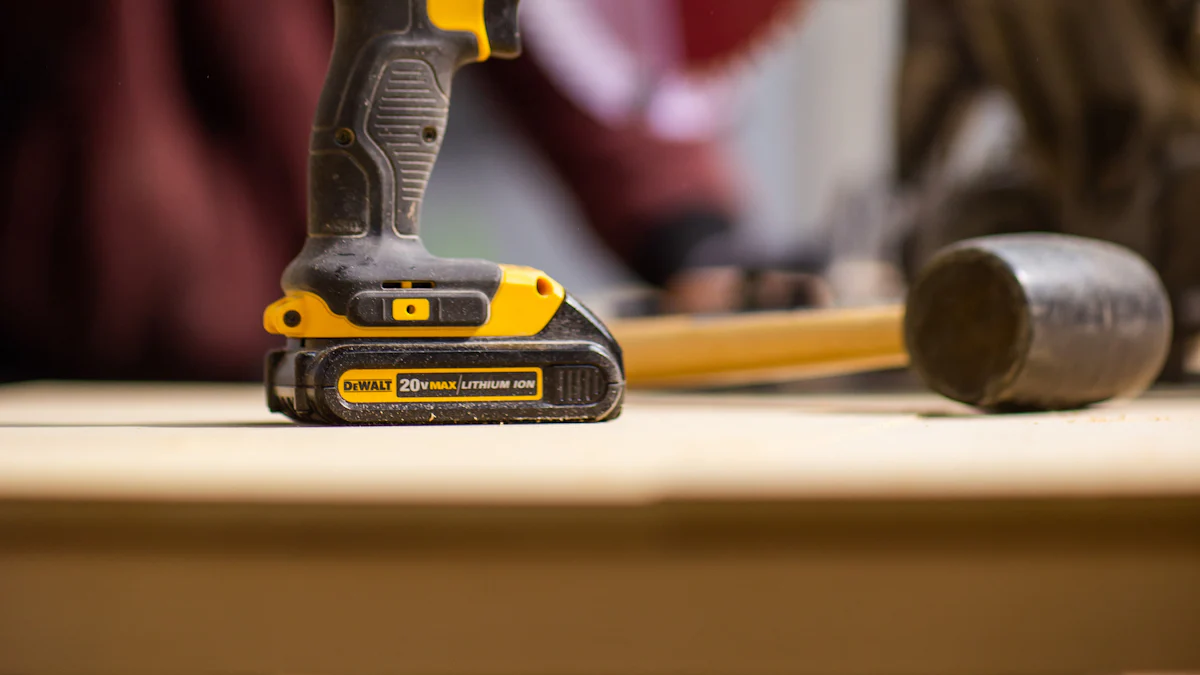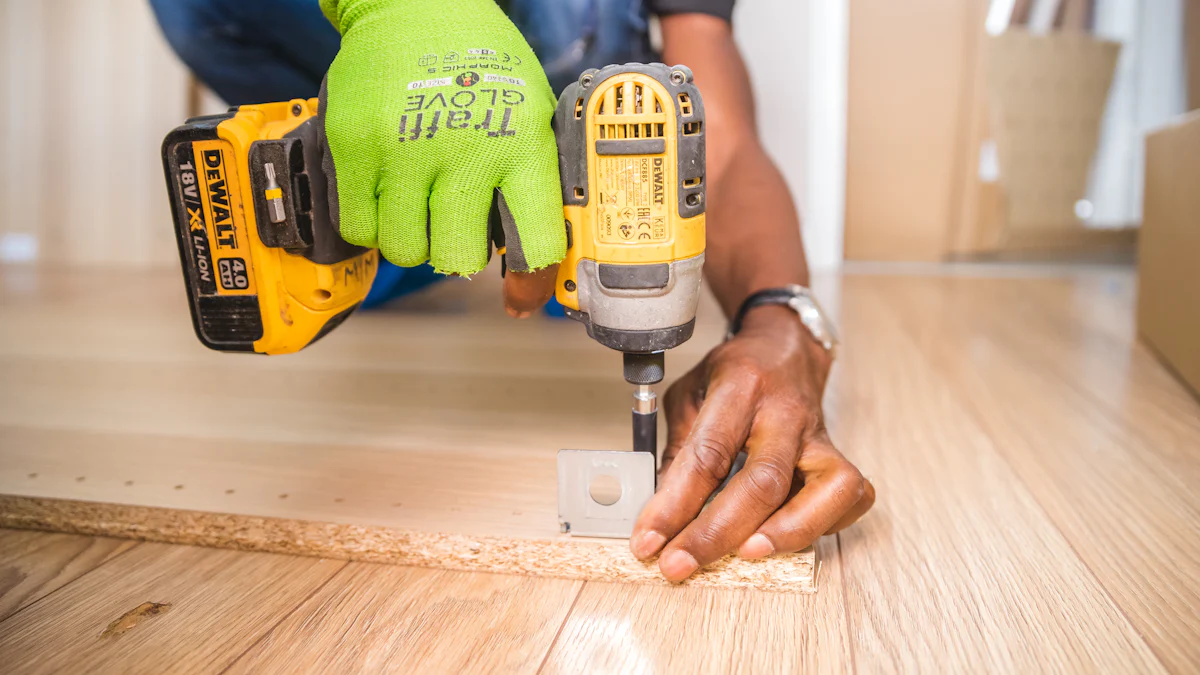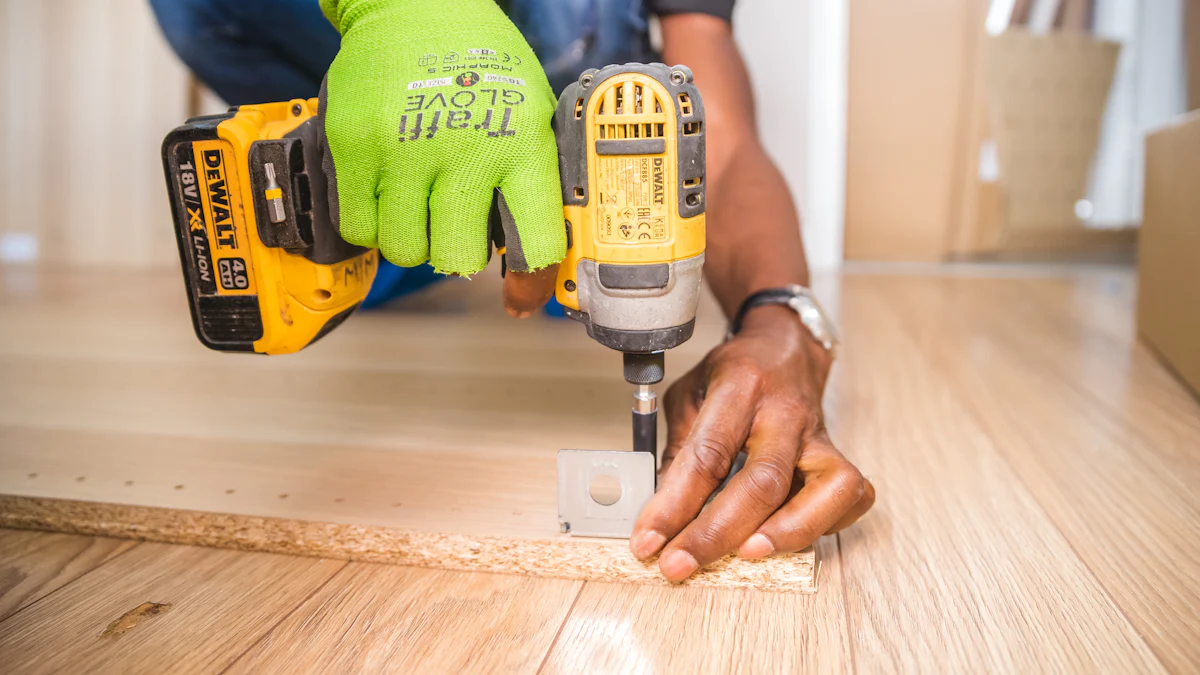
Impact wrenches play a crucial role in automotive and industrial work. Choosing the right size impacts efficiency and performance. A 3/8 impact wrench suits lighter tasks and assembly work, while a 1/2 impact wrench handles tougher bolts and high-torque applications. This comparison aims to help you select the best tool for your specific needs.
Power and Performance

Power Output
3/8″ Impact Wrench Power
A 3/8 impact wrench provides sufficient power for light to medium tasks. This tool typically delivers around 75 lb of torque. The compact size allows for easy handling in tight spaces. Mechanics often use a 3/8 impact wrench for assembly work and smaller bolts. This tool offers a balance between power and maneuverability.
1/2″ Impact Wrench Power
A 1/2 impact wrench excels in delivering high power. This tool usually provides around 425 lb of torque. The larger size makes it ideal for heavy-duty jobs. Professionals use a 1/2 impact wrench for tough bolts and high-torque applications. This tool ensures efficiency in demanding tasks.
Torque Range
Typical Torque for 3/8″ Impact Wrenches
The torque range for a 3/8 impact wrench generally falls between 15 to 100 ft lbs. This range suits various automotive and light industrial tasks. The versatility of a 3/8 impact wrench makes it a popular choice for many users. This tool handles most nuts and bolts in vehicles effectively.
Typical Torque for 1/2″ Impact Wrenches
The torque range for a 1/2 impact wrench typically spans from 30 to 120 ft lbs. This range accommodates more demanding applications. A 1/2 impact wrench proves useful for high-torque needs and hard-to-remove fasteners. This tool often lasts longer under high-torque conditions compared to a 3/8 impact wrench.
Durability and Build Quality
Material and Construction
Common Materials Used
Manufacturers use high-quality materials for both 3/8″ impact wrenches and 1/2″ impact wrenches. These tools often feature steel or aluminum housings. Steel provides durability and strength. Aluminum offers a lighter weight. Both materials ensure longevity and resistance to wear. Some models may include composite materials. These materials reduce weight further while maintaining strength.
Build Quality Comparison
Build quality varies between 3/8″ impact wrenches and 1/2″ impact wrenches. The 1/2″ impact wrench often has a more robust construction. This tool handles higher torque and heavy-duty tasks. The 3/8″ impact wrench focuses on compactness and ease of use. Both sizes offer excellent build quality. Users should consider the specific needs of their tasks when choosing.
Longevity and Maintenance
Maintenance Requirements for 3/8″ Impact Wrenches
3/8″ impact wrenches require regular maintenance. Users should check for wear on moving parts. Lubrication helps maintain smooth operation. Regular cleaning prevents debris buildup. Proper storage extends the tool’s life. Following the manufacturer’s guidelines ensures optimal performance.
Maintenance Requirements for 1/2″ Impact Wrenches
1/2″ impact wrenches also need consistent maintenance. High-torque applications put more stress on the tool. Frequent lubrication keeps the wrench running smoothly. Inspecting for wear and tear is crucial. Cleaning after each use removes dirt and grime. Storing the tool in a dry place prevents rust. Adhering to maintenance schedules prolongs the tool’s lifespan.
Applications and Use Cases

Common Applications for 3/8″ Impact Wrenches
Automotive Work
A 3/8 impact wrench proves invaluable in automotive work. Mechanics use this tool for tasks like changing tires and working on brake systems. The compact size allows access to tight spaces under the hood. This tool handles most nuts and bolts found in vehicles. The lightweight design reduces user fatigue during extended use.
Light Industrial Tasks
Light industrial tasks benefit from a 3/8 impact wrench. Assembly lines often require quick fastening and unfastening of bolts. The moderate torque range suits these applications well. Workers can easily maneuver the tool around machinery. The versatility of a 3/8 impact wrench makes it a staple in many light industrial settings.
Common Applications for 1/2″ Impact Wrenches
Heavy-Duty Automotive Work
Heavy-duty automotive work demands a 1/2 impact wrench. Professionals rely on this tool for removing stubborn lug nuts. The high torque output tackles hard-to-remove fasteners with ease. This tool excels in tasks like engine repair and suspension work. The robust construction ensures durability under heavy use.
Industrial and Construction Tasks
Industrial and construction tasks require the power of a 1/2 impact wrench. Workers use this tool for assembling steel structures and large machinery. The high torque range accommodates demanding applications. This tool withstands the rigors of construction sites. The 1/2 impact wrench proves essential for tasks requiring significant force.
Ease of Use and Handling
Weight and Ergonomics
Weight Comparison
A 3/8 impact wrench typically weighs less than a 1/2 impact wrench. The lighter weight makes it easier to handle for extended periods. Users often prefer the 3/8 impact wrench for tasks requiring precision and control. The reduced weight minimizes fatigue, allowing for longer work sessions without strain.
Ergonomic Design Features
Manufacturers design both 3/8 and 1/2 impact wrenches with ergonomics in mind. Features like cushioned grips and balanced weight distribution enhance comfort. A 3/8 impact wrench often includes compact designs that fit well in hand. This makes it ideal for tight spaces and delicate tasks. The 1/2 impact wrench, while heavier, often features robust handles to support high-torque applications. Both tools aim to reduce user fatigue and improve overall handling.
User Experience
Handling and Control
Users find the 3/8 impact wrench easier to control due to its lighter weight and compact size. This tool excels in tasks requiring precision and maneuverability. The 1/2 impact wrench offers greater power but requires more effort to handle. Professionals use this tool for heavy-duty tasks where control is less critical. Both tools provide reliable performance, but the choice depends on the specific job requirements.
User Feedback and Reviews
Many users share positive experiences with both types of impact wrenches. One user stated, “I have both. The 1/2 has about 425 lb torque and I use it for the big jobs. I use the 3/8 (about 75 lbs torque) for the tight places where torque is not a requirement.” Another user mentioned, “I’ve found the 3/8 I have almost useless as I can usually break loose small nuts with a plain socket and the 3/8 can’t handle the ones that are really stuck.” These testimonials highlight the importance of choosing the right tool for the job.
You need to choose the right impact wrench based on your specific tasks. A 3/8″ impact wrench offers versatility and precision for light to medium jobs. This tool excels in tight spaces and assembly work. A 1/2″ impact wrench provides high power for heavy-duty applications. This tool handles stubborn bolts and high-torque needs effectively. Consider your primary use cases before making a decision. Investing in both sizes may offer the best flexibility. Choose wisely to enhance your efficiency and performance.
See Also
Cruising Gear: Best Quality Accessories for Motorcycles
Discovering the Range of Footwear for Males and Females
